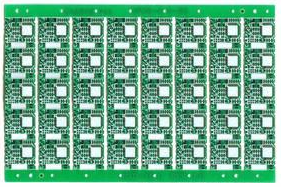For a newly designed PCB multi-layer board, there will be some trouble in the investigation. When the circuit board has a large shape and many soldering points, as an experienced PCB multi-layer board custom manufacturer, we will organize a set of reasonable debugging methods for For your reference, first of all, we need to check the appearance of the board to see if there are any problems, such as obvious cracks, open and short circuits, etc. If necessary, we can test the resistance of the power supply and the ground wire. The next step is to solder the components. If there are some independent modules, when you do not have full confidence to ensure that they can all work properly, it is best not to install them all at once, but install them separately. The circuit can be installed all at once), so that it is easier to confirm which problems occur, so as not to know the scope of the problem when you encounter a failure. You can install the power supply first, and then power on to check whether the output voltage of the power supply is normal. If you are not confident that you can pass it all at once before powering on, (even if you have full confidence, it is recommended that you add a fuse, just in case).

Use an adjustable regulated power supply with current limiting function, first set the overcurrent protection current, and then slowly increase it, and monitor the input current, voltage, and output voltage. If there is no abnormality during the upward adjustment process, and the values are all normal, the power supply is OK. Otherwise, disconnect the power supply, find the fault point, and repeat the above steps until the power supply is normal.
PCB test failure method
Three methods for PCB custom manufacturers to troubleshoot circuit board failures: One, measure the voltage method, first confirm whether the voltage of each chip power supply pin is normal, and then check whether the various reference voltages are normal, and there are other points Whether the working voltage is normal, etc. Second, the signal injection method, add the signal source to the input terminal, and then measure the waveform of each point in turn to see if it is normal to find the fault point. If there is no response to the previous level, but there is a response to the next level, it means that the problem lies in the previous level and should be checked. 3. Methods to find fault points, such as watching, listening, smelling, touching, etc. "Look" means to see if there is any obvious mechanical damage to the component, such as cracks, burns, deformation, etc.: "Listen" means to hear whether the working sound is normal, for example, something that shouldn't be loud is ringing, the place where it should not be loud or the sound Abnormality, etc.: "smell" is to check for peculiar smells, such as burnt smell, capacitor electrolyte smell, etc. For an experienced electronic maintenance personnel, they are very sensitive to these smells: "touch" is to use Test whether the temperature of the device is normal by hand, for example, it is too hot or too cold. Some power devices will heat up when working. If it is cold to the touch, it can basically be judged that it is not working.